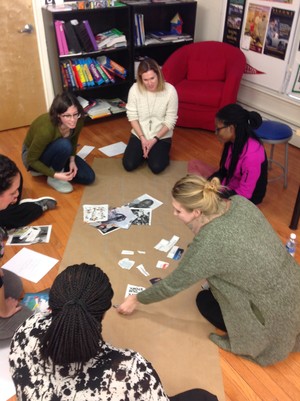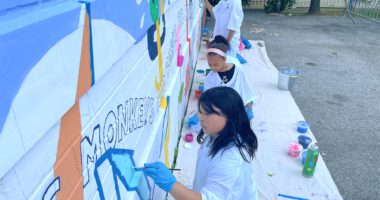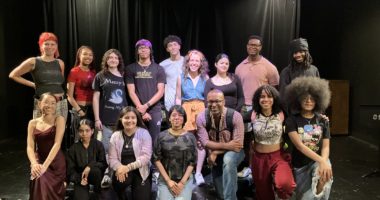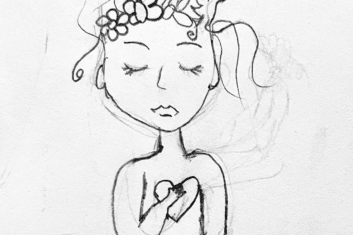Saturday’s workshop was all about how we use theatre for social justice. We explored many different activities that could be used in the classroom to help students begin a dialogue and understand different forms of oppression. I found this workshop to be thoughtful and executed in way that was helpful for the Teaching Artists to learn how to scaffold their own lesson plans based on the ideas presented.

I love the concept of engagement before information, and Saturday’s workshop really illustrated how this idea can be implemented well. Before diving right in to discussing social justice and the ways in which we can use theatre as a learning tool, the group was asked to write words or phrases on large pieces of paper that were hung around the room, each one with a different image in the center. Afterwards, the class sat and discussed the images and things written on them. This sparked a class discussion led by Patti Chilsen that led into questions the Teaching Artists had, how this exercise made them feel and then how we create ownership of a space for our students. There were a lot of questions from the group about how it can be daunting when you sit down and think about how you are going to present this kind of information. One of the main takeaways from this was that it’s important to make sure that everyone in the room feels represented. As a facilitator it’s important to take into account the differences between the students and yourself in the room as well as the students and perhaps the material being presented. It’s important to find ways to create access points and conversation so all voices can be heard. The rest of the workshop explored how we find ways to acknowledge that these struggles don’t just happen with in a particular population and draw parallels between different types of people. Inviting the students to bring their own parallels into the space can help give them a sense of ownership of their learning and create a deeper understanding.
The next activity was called Art Gallery. This activity was great as an example of different kinds of people working together for a similar cause. As we discussed, this idea isn’t usually dealt with in public schools. Many times it is one group fighting against another, but in this activity we discussed people from different incomes, social stature and race coming together to fight for something they truly believed in. I loved this lesson because it allowed access for many different types of learners right off the bat. It used the visual and aural senses and really created a mood and texture to the lesson bringing an experience to the topic before throwing a lot of content at the students. This was a great hook and a perfect example of engagement before information.
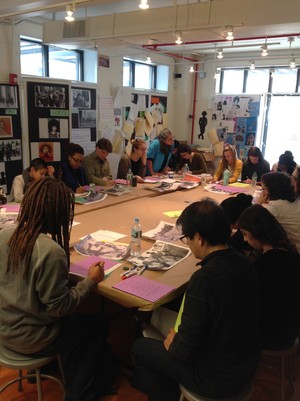

The afternoon activity had us writing poems and reflecting on who we are compared to how the world sees us. This is a great activity for getting students to reflect on the stereotypes that we create and how we can understand that people are more then how they might seem. Renee Watson read a beautiful poem that she had written about who she is. She recited the poem for us and then we discussed the sensory details and writing tools that are embedded in the poem. By allowing the students to discover these things themselves, it helps them take ownership of their knowledge of writing poetry. By breaking it down, it takes the fear out of writing a poem like this which in turn makes the next portion of this lesson more enjoyable. Renee was great at breaking down the process of writing a poem like this and giving examples and multiple ways in for students who may not feel comfortable with writing. For me, this was my favorite part. As an actor, I have never felt comfortable with my own writing, so having permission to steal ideas from Renee, and being given examples and starting points made writing my own poem much more enjoyable.
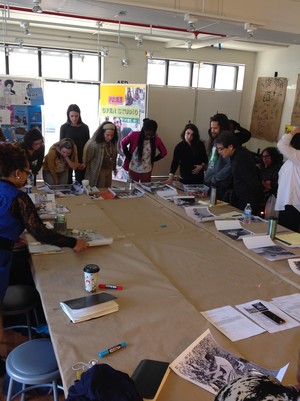

The class ended with an activity that dealt with privilege. Who has privilege and who doesn’t? Who has the power and whose responsibility was it to make it fair? Who fixes the imbalance? After spending the day and looking at different populations oppressions, and in turn looking at our own, ending the workshop looking outward and beginning to think about change and how we create it balanced the lessons out. While it left many questions, it created dialogue and conversation which is the aim, isn’t it? We do this work so we can create discussion, and thought, and eventually change. How do we use theatre for change? We use it to change the dialogue and create spaces where students can express reflect and express themselves.
-Carla Stickler, NYU Graduate Student & TATIP Intern
“Community Word Project’s remarkable Social Justice Workshop was an inspiring learning experience for me and, I believe, for everyone in the room. The day-long event was co-led by Patti Chilsen and Renée Watson, who partner brilliantly, building on each other’s insights and special skills. Designed to address specific social justice challenges and opportunities in the classroom, the exercises and reflections were beautifully scaffolded, rigorous, thought-provoking, and fun. It was a great day, filled with many moments of discovery, and I know it will impact my teaching. I highly recommend the Social Justice workshop to TAs and arts education administrators interested in deepening their practice and making their programs more inclusive.”
